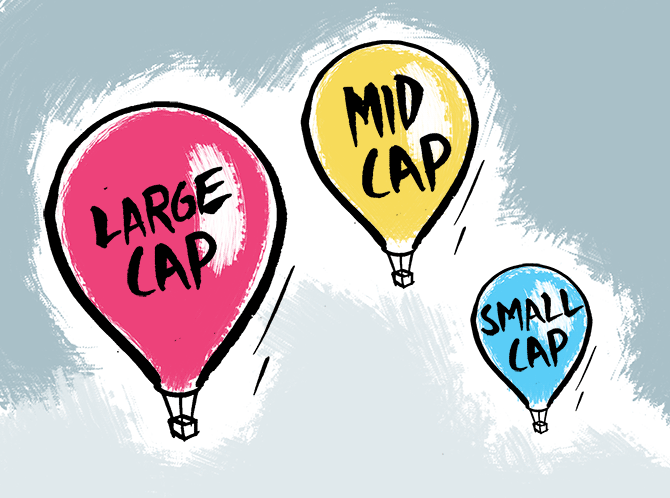 | « Back to article | Print this article |
Half a dozen stocks from the large-cap universe and over two dozen from the mid-cap universe have been replaced.
Illustration: Dominic Xavier/Rediff.com

The large- and mid-cap universe for equity mutual funds (MFs) is undergoing a sizeable churn, following a volatile first half of 2019 marred by corporate defaults and slowdown in the automobile sector.
Half a dozen stocks from the large-cap universe and over two dozen from the mid-cap universe have been replaced, shows the latest data from the Association of Mutual Funds in India (Amfi).
Ashok Leyland and MRF have lost the tag of large caps while non-banking financial companies (NBFCs) L&T Finance Holdings and Indiabulls Ventures have moved out of the large-cap space.
Page Industries, which shocked the Street with weak March quarter earnings, has been replaced as well.
Meanwhile, Punjab National Bank, IDBI Bank and PFC have made it to the large-cap universe, along with Torrent Pharmaceuticals, ABB and ACC.
The Securities and Exchange Board of India (Sebi) provides one month to equity schemes to rebalance their portfolios to align with the updated list.
Industry experts say the stocks removed from the large-cap universe could see some sell-off.
The large-cap category is the second-biggest equity category after multi-cap. with assets under management of Rs 1.41 trillion at the end of June 30, 2019.
In comparison, the mid- and small-cap fund categories have AUM of Rs 77,160 crore and Rs 45,795 crore, respectively.
The exact quantum of outflows and inflows cannot be gauged as most of these are actively-managed schemes that allow fund managers to use their discretion.
However, a large-cap scheme needs to deploy a minimum of 80 per cent of its corpus towards large-cap companies.
Similarly, mid- and small-cap schemes need to have a minimum investment of 65 per cent in stocks falling in their category.
Dhirendra Kumar, chief executive of Value Research, said the changes to the investing universe might not impact the markets.
“No scheme is invested in large-cap or mid-cap to the hilt.
"Also, there is enough leeway for schemes to invest in stocks outside their universe.
"There is also enough time to rebalance. So, the churn will not be disruptive,” he said.
In October 2017, Sebi issued a circular to define large-, mid- and small-caps.
Under this, the top 100 companies in terms of their market cap are tagged as large caps, the next 150 companies fall in the mid-cap segment and companies beyond the top 250 are all considered to be small caps.
Amfi is tasked with computing the ranks based on average market cap every six month.
The latest data for the January-June 2019 period was released earlier this month.
Typically, companies with market value in excess of Rs 28,000 crore fall in the large-cap universe.
While the mid-cap universe comprises companies that have market cap between Rs 9,000 crore and Rs 28,000 crore.